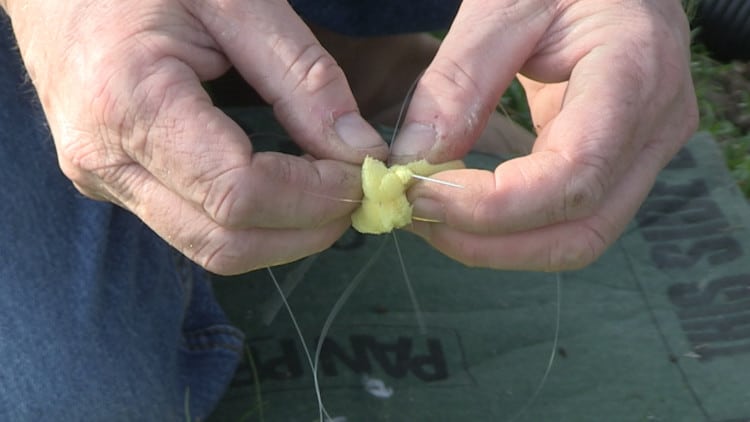There’s an increased need for power in our gardens, with outdoor lighting, water features and dream garden spaces like outdoor bars and kitchens. This easy-to-follow guide and video will show you how to lay underground pipes for cables in the garden.
Laying underground pipes for cables in the garden
There are many reasons for laying underground pipes to run cables through. Of course, it decreases trip hazards which is safer for children and adults of all ages. As well as this important practical reason, it also helps visually. Rather than wires and cables running along the ground or around the perimeter of the garden, they’ll be neatly tucked away and organised underground.
To get started, you’ll need to dig a trench that will fit the length and width of the pipe from one point of the garden to the other. Once you’ve done this and have the right length of conduit, the tricky part can be feeding cable down it. That’s where this guide comes in…
What you’ll need:
- Rope
- Fishing wire
- Masking tape
- Scissors
- Sponge
- Needle
- Vacuum with pipe
What to do:
• Start by threading the fishing wire through the eye of the needle.
• Cut off a piece of the sponge and stitch the needle into the chunk. Keep stitching until the fishing wire becomes tightly attached to the sponge, then put this to one side.

• Put the pipe of the vacuum into one side of the conduit, using masking tape to keep the two pipes connected.
• Stick the scissors into the ground and wind the sponge and fishing wire attachment around it to keep it set in place.

• Next, reel off plenty of the fishing wire so there’s the correct length to feed through the conduit. Anchor the end into place by placing under a rock or tying loosely around a structure, like I did with the tap.

Then…
• Return to the top to retrieve the end of the fishing wire with the sponge and take it back to the open end of the pipe so it can be fed through.

• Turn on the vacuum and carefully feed the sponge end through the conduit until the measured length of fishing wire is pulled taut.
• Once all the fishing wire has been pulled through, pull the conduit as straight as possible so there is minimal resistance or loops in the piping.
• Turn off the power, remove the vacuum pipe from the conduit and remove the sponge.
• The fishing wire is now pulled through the piping, so can be used to feed wire or cable through the conduit.

• To do this, get hold of the rope, and tie it to the section with the sponge. Make sure the knot is nice and tight, so it doesn’t break. Wrap around some of the fishing wire to secure it in place well. Tidy it up by securing it together with a piece of tape.
• Feed it through the end of the conduit, then return to the opposite side to pull it through. It’s handy to have someone on the other side to pull it through to save you going back and forth.
• Feeding through the rope means there’s a sturdier material through the pipe.
• Carefully pull, then relax – repeat this so you’re not putting too much pressure on the fishing wire as it may cause it to snap.


Leave A Comment